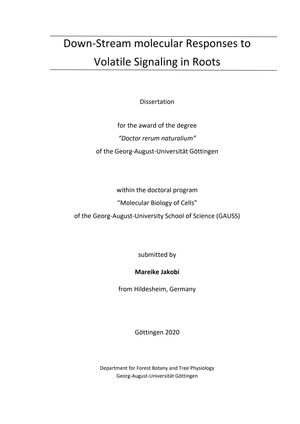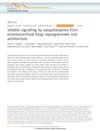Downstream Molecular Responses to Volatile Signaling in Roots
January 2021

TLDR Plant roots respond to fungus smells by possibly using certain proteins and a plant hormone to change root growth, but more research is needed.
This study explored the molecular responses of plants to volatile compounds emitted by the ectomycorrhizal fungus Laccaria bicolor, focusing on lateral root (LR) formation in Arabidopsis thaliana and Populus x canescens. The researchers used genetic approaches to investigate the roles of various Arabidopsis mutants in LR formation when exposed to fungal volatiles. They found that none of the tested mutants, including those related to reactive oxygen species homeostasis, strigolactone biosynthesis, and germination, showed different responses compared to wildtype plants. However, screening a library of 42 cysteine-rich receptor-like kinase (CRK) mutants suggested that CRK4, CRK42, and CRK46 might be involved in volatile perception, although further analysis is needed to confirm this. The study also determined that co-cultivation with just one fungal plug was sufficient to enhance LR formation and that a two-day exposure to volatiles could induce this response. Transcriptome and metabolome analyses identified a down-regulated gene of unknown function (At4g31330) and several plant hormone-related genes, particularly those associated with abscisic acid (ABA), which might be involved in volatile perception or signaling. Mutant lines related to ABA signaling showed altered LR responses to volatiles, suggesting ABA's role in this process. Overall, the study concludes that LR formation in response to L. bicolor volatiles is complex, potentially involving unknown proteins, CRKs, and ABA signaling, and further research is needed to understand how these elements contribute to root development.




